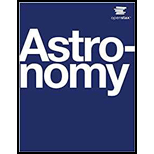
Concept explainers
(a)
The magnitude and direction of magnetic force on the bob at the lowest point of the pendulum when it is released.
Answer to Problem 73PE
Explanation of Solution
Given:
A pendulum is set up so that its bob swings between the poles of permanent magnet. Charge on the bob is given as
Formula used:
The magnetic force on a charge particle having charge
Calculation:
A swinging bob of a pendulum is released from rest from height
The tangential velocity is then
Substituting the values of acceleration due to gravity
Now the force on the bob is
Substituting the values of charge on the bob
And the direction of the force is upward.
Conclusion:
When the bob of pendulum placed in the magnetic field region is released, the magnetic force on itis
(b)
The acceleration of the bob at the bottom of its swing in a magnetic field region.
Answer to Problem 73PE
Explanation of Solution
Given:
A pendulum is set up so that its bob swings between the poles of permanent magnet. Charge on the bob is given as
Formula used:
The magnetic force on a charge particle having charge
Force on a particle of mass
Calculation:
It is seen in part (a) that the magnetic force acting on the bob when it is released from height in a uniform magnetic field is
The acceleration produced in the bob is
Conclusion:
The acceleration of the bob at the bottom of its swing is
Want to see more full solutions like this?
Chapter 22 Solutions
COLLEGE PHYSICS (OER)
- An electron moving at 4.00103 m/s in a 1.25-T magnetic field experiences a magnetic force of 1.401016 N. What angle does the velocity of the electron make with the magnetic field? There are two answers.arrow_forwardWhat is the direction of a current that experiences the magnetic force shown in each of the three cases in Figure 22.54, assuming the current runs perpendicular to B?arrow_forwardWhat is the direction of the velocity of a negative charge that experiences the magnetic force shown in each of the three cases in Figure 22.51, assuming it moves perpendicular to B?arrow_forward
- Inside a motor, 30.0 A passes through a 250-turn circular loop that is 10.0 cm in radius. What i5 the magnetic field strength created at its center?arrow_forward(a) A DC power line for a light-rail system carries 1000 A at an angle of 30.0° to the Earth’s 5.00105-T field. What is the force on a 100-m section of this line? (b) Discuss practical concerns this presents, if any.arrow_forwardWhat is the direction of the magnetic force on a positive charge that moves as shown in each of the six cases shown in Figure 22.59?arrow_forward
- What is the direction of the magnetic force on the current in earth of the six cases in Figure 22.53?arrow_forwardWhat is the direction of the magnetic field that produces the magnetic force shown on the currents in each of the three cases in Figure 22.55, assuming B is perpendicular to I?arrow_forwardA particle’s path is bent when it passes through a region of non-zero magnetic field although its speed remains unchanged. This is very useful for “beam steering’’ in particle accelerators. Consider a proton of speed 4106m/s entering a region of uniform magnetic field 0.2 T over a 5-cm-wide region. Magnetic field is perpendicular to the velocity of the particle. By how much angle will the path of the proton be bent? (Hint: the particle comes out tangent to a circle.arrow_forward
- Integrated Concepts A pendulum is set up so that its bob (a thin copper disk) swings between the poles of a permanent magnet as shown in Figure 22.63. What is the magnitude and direction of the magnetic force on the bub at the lowest point in its path, if it has a positive 0.250C charge and is released from a height of 30.0 cm above its lowest point? The magnetic field strength is 1.50 T. (b) What is the acceleration of the bob at the bottom of its swing it its mass is 30.0 grams and it is hung from a fiexible string? Be certain to include a free-body diagram as pan of your analysis.arrow_forwardA cosmic ray electron moves at 7.50106m/s perpendicular to the Earth's magnetic field at an altitude where field strength is 1.00105T. What is the radius of the circular pain the electron follows?arrow_forward(a) A 0.750-m-long section of cable carrying current to a car starter motor makes an angle of GOP with Earth's 5.5105T field. What is the current when tire wire experiences a farce of 7.010N? (b) If you run the wire between the poles of a strong horseshoe magnet, subjecting 5.00 cm of it to a 1.75-T field, what force is exerted on this segment of wire?arrow_forward
 College PhysicsPhysicsISBN:9781938168000Author:Paul Peter Urone, Roger HinrichsPublisher:OpenStax College
College PhysicsPhysicsISBN:9781938168000Author:Paul Peter Urone, Roger HinrichsPublisher:OpenStax College Physics for Scientists and Engineers with Modern ...PhysicsISBN:9781337553292Author:Raymond A. Serway, John W. JewettPublisher:Cengage Learning
Physics for Scientists and Engineers with Modern ...PhysicsISBN:9781337553292Author:Raymond A. Serway, John W. JewettPublisher:Cengage Learning Physics for Scientists and EngineersPhysicsISBN:9781337553278Author:Raymond A. Serway, John W. JewettPublisher:Cengage Learning
Physics for Scientists and EngineersPhysicsISBN:9781337553278Author:Raymond A. Serway, John W. JewettPublisher:Cengage Learning College PhysicsPhysicsISBN:9781285737027Author:Raymond A. Serway, Chris VuillePublisher:Cengage Learning
College PhysicsPhysicsISBN:9781285737027Author:Raymond A. Serway, Chris VuillePublisher:Cengage Learning College PhysicsPhysicsISBN:9781305952300Author:Raymond A. Serway, Chris VuillePublisher:Cengage Learning
College PhysicsPhysicsISBN:9781305952300Author:Raymond A. Serway, Chris VuillePublisher:Cengage Learning Physics for Scientists and Engineers, Technology ...PhysicsISBN:9781305116399Author:Raymond A. Serway, John W. JewettPublisher:Cengage Learning
Physics for Scientists and Engineers, Technology ...PhysicsISBN:9781305116399Author:Raymond A. Serway, John W. JewettPublisher:Cengage Learning





